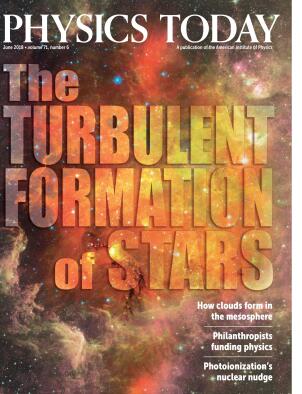Positrons outshine electrons
DOI: 10.1063/PT.3.3943
In a process inverse to the photoelectric effect, phosphors and other cathodoluminescent materials emit photons when struck by sufficiently energetic electrons. That process is central to the function of old-style televisions and certain light-emitting diodes, microscopes, and scintillation detectors. But electrons aren’t the only particles that can trigger cathodoluminescence—so can their antimatter counterparts, positrons. Now Eve Stenson at the Max Planck Institute for Plasma Physics in Germany and her colleagues report marked differences in the phosphor luminescence produced by positrons and electrons of the same energy.
The researchers directed a beam of positrons with energies between 0 and 5 keV at two phosphor screens and then did the same with an electron beam. CCD cameras captured the light that emerged. For both screens, positrons produced substantially more luminescence than electrons with the same energy. For example, 5 eV positrons striking a zinc oxide phosphor, which was chosen for its low-energy sensitivity, triggered as much luminescence as 2.3 keV electrons.
The findings demonstrate that even sluggish positrons do more than just transfer their kinetic energy to coax photon emission in phosphors. The impinging antimatter particles encounter and annihilate with valence electrons to leave behind positively charged holes. Other electrons in the material then combine with the holes to produce more photons. Exactly how that happens, and how much photon emission results, seems to depend on the properties of the given material. The researchers say that by analyzing the differences between positron- and electron-induced luminescence, condensed-matter physicists could investigate outstanding questions about cathodoluminescent materials, such as why they don’t luminesce at all below a certain energy threshold. (E. V. Stenson et al., Phys. Rev. Lett. 120, 147401, 2018,, doi:10.1103/PhysRevLett.120.147401
More about the Authors
Andrew Grant. agrant@aip.org
